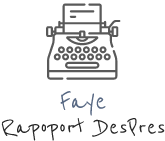When I launched a new website and blog, one of the unfortunate side effects was the loss of years of blog posts from my previous website. I’d chronicled important moments in both my personal and writing life, as well as lessons I’d learned about the craft of writing. Some of the most popular posts on my old blog featured creative nonfiction writing tips. So when I can, I’ll try to repeat some of the information I lost in those posts.
When I studied the craft of creative nonfiction at the Solstice MFA Creative Writing Program, one of the lessons that stuck with me focused on the difference between the “situation” in a personal essay (or memoir) and the “story” you were trying to tell. This concept is covered much more extensively than I can cover it here in a book aptly titled The Situation and the Story by Vivian Gornick. It’s a complicated topic, so I’ll just touch on the basics of what I learned.
Many beginning CNF writers produce first drafts that simply chronicle an event. “This happened, then that happened, then this happened. The end.” What occurred might be interesting, but effective creative nonfiction includes more than “just the facts.” Memoirists and personal essayists do share events witnessed or experienced by the narrator. But they also do something else—they examine those events carefully, turning them over in their figurative hands as they attempt to glean some kind of meaning from them. In this way, they find the story behind those events.
Writer Paulette Alden describes it on her own blog this way: “The situation is the context or circumstance, sometimes the plot; the story is the emotional experience that preoccupies the writer: the insight, the wisdom, the thing one has come to say.”
It’s the story the writer pulls out of the event(s), along with interesting and skilled writing, of course, that makes a memoir or personal essay effective and absorbing. It’s the story—more than the details of the actual event(s)—that lingers in the reader’s mind long after the essay or book comes to an end.
Let’s take the funny meme I found online and posted above an example. What’s the situation in this photo—the character, setting, and event that occurred? We have a dog sitting on a couch in a living room. A torn pillow is by his side. If we were simply going to describe the situation as a first-person narrator, we might write, “I walked into the living room, and there on the couch sat Fido, looking guilty. Beside him was a pillow he’d clearly torn apart. Feathers were everywhere.”
That’s amusing, maybe, but it’s also a little flat. The question the writer must always ask is, “So what?”
Hence the humorous subtitle somebody added to provide some more context and tell a story: “There was a spider.”
Now, there really wasn’t a spider, obviously. So what is the story here? Remember, the story is the meaning we glean from the event. So, let’s think about this. Dogs can be destructive, and it amuses us to think of funny excuses they might give when they behave badly. But why? So what?
When looking at the photo, rather than seeing a terribly upsetting annoyance and moment of destruction, we , if we’re pet lovers, see this event as cute and funny (our feelings are played on by the text). Something inside us understands what it means to love a pet so much that we accept a certain amount of home destruction is possible (even if we groan at it).
Why is that true? The answer might be different for every person. But it’s the fact that we laugh at the photo and understand what it means to love a dog this way that is the story behind this situation.
Usually the story in creative nonfiction revolves around the evolution, or growth, of the narrator. So let’s play essayist and add some action (to show) and reflection (to tell) to attach a story to this situation.
Now I’m making this all up, but here’s what that might took like:
“I walked into the living room, and there on the couch sat Fido, looking guilty. Beside him was a pillow he’d clearly torn apart. Feathers were everywhere.
There was a time when I would have gone ballistic over such a scene. My need to control everything—to have everything properly in its place at all times—would have kicked in. Who knows what I might have done to frighten poor Fido, who looked as if he wanted to blame the whole thing on a spider?
Thankfully, I wasn’t that person anymore. I took a deep breath. I walked across the room and gave my frightened dog a long hug. I knew he’d just been scared because he was left home on his own. I knew he had acted out. I remembered that feeling, and I remembered that I, too, had acted out.
Sighing, I kissed Fido on his head. ‘Silly mutt,’ I mumbled fondly. Then I chuckled, and started cleaning up.”
OK, that wasn’t Tolstoy. But I hope it gets the concept across. The situation was simple: a dog tore apart a pillow, and his owner came home and discovered the mess. The story was much more meaningful: this narrator had gone through some things in his or her life, and had come a long way to a basic realization about that life. The story is about neglect, and fear, and recovery. (What did happen to that narrator? What is the full story? Well, this was fiction, so…maybe I need to write that story.)
One of my teachers at the MFA, the late Michael Steinberg (whom I miss greatly), really hammered home the concept of situation vs. story in his classes. And maybe that’s story behind this post—I hope in a small way to honor his legacy of encouraging reflection and story-telling in creative nonfiction.


I like the way you lay this out. It illustrates something I’ve had trouble applying: the narrator and the first-person character go through discrete evolutions.
The character hugs the dog instead of acting out.
It is the narrator who understands why the character does this. And in a longer piece, the narrator could show us the steps in the character’s evolution.